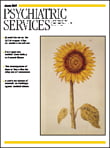Juvenile-Onset Schizophrenia: Assessment, Neurobiology, and Treatment
Understanding complex mental disorders is seldom a destination of revelation and more often a journey of evolving discovery. In any journey, it is wise to periodically pause and take stock of where you've been, where you are now, and where you're going.
Robert Findling and S. Charles Schultz, editors of Juvenile-Onset Schizophrenia , have done a masterful job in charging their outstanding group of contributing authors to chronicle the evolution of our current understanding of this severe and potentially devastating disorder and to anticipate future directions in the scientific and clinical journey. The authors also underscore the importance of findings over the past decade in the emergence of schizophrenia among young patients as a window into a better understanding of the genetic and neurodevelopmental underpinnings of the disorder across the lifespan.
This book pursues the dual objectives of reviewing the current scientific and clinical understanding of schizophrenia among children and adolescents, which was once considered rare, and integrating this knowledge with the growing understanding of schizophrenia in general. Full syndromal manifestation of schizophrenia remains uncommon among youths and is associated with unique treatment challenges, different responses to treatments compared with adults, and often poorer outcomes compared with those who develop the disorder in adulthood. Nevertheless, the authors present lines of evidence demonstrating the continuity of the juvenile and adult disorders and consider the factors that may contribute differentially to the emergence of the disorder at different points during development.
The validity and stability of the diagnosis of early-onset schizophrenia is crucial to the foundation of research on the disorder, and Dr. Gabrielle Carlson and her colleagues set the stage with a logical and evidence-based presentation on the phenomenology and assessment of the disorder. In a later chapter, Drs. Nitin Gogtay and Judith Rappoport lend a note of caution on diagnostic specificity, reporting on the differential diagnostic possibilities of adolescent mental disorders. Dr. Matcheri Keshavan makes a provocative observation in the chapter on progress toward a developmental hypothesis of schizophrenia. The quest for a unifying theory of schizophrenia might be well served by consideration of the neurodevelopmental environment of the adolescent brain and the extent to which this evolving environment may provide insight into factors contributing to the emergence of schizophrenia. Subsequent chapters elaborate the general neurodevelopmental environment of adolescence and the particular factors that may be relevant to the emergence of schizophrenia within that context, including an interesting discussion of genetics factors and endophenotypes.
The book transitions nicely from the scientific and research review to the practicalities of clinical diagnosis and treatment. Juvenile-onset schizophrenia is a disorder of pervasive developmental disruption, and clinical care requires careful assessment of multiple parameters of developmental function. Pharmacologic treatment of juvenile-onset schizophrenia is not well studied, and many unknowns remain, including age-specific issues of efficacy and safety in the treatment of patients who are not yet physically mature. Furthermore, the interacting combination of biopsychosocial factors in the youthful emergence of schizophrenia and the implications for treatment remain to be untangled. The concluding chapters offer a compact review of the psychosocial factors in diagnosis and treatment of juvenile-onset schizophrenia that is a welcome complement to the biological perspective.
Overall, the editors have stitched the varying perspectives of the contributing authors into a very satisfying complete text, which is always a challenge in a multiauthor book. A substantial breadth of material is well presented on state-of-the-art clinical care and cutting-edge science related to juvenile-onset schizophrenia.



